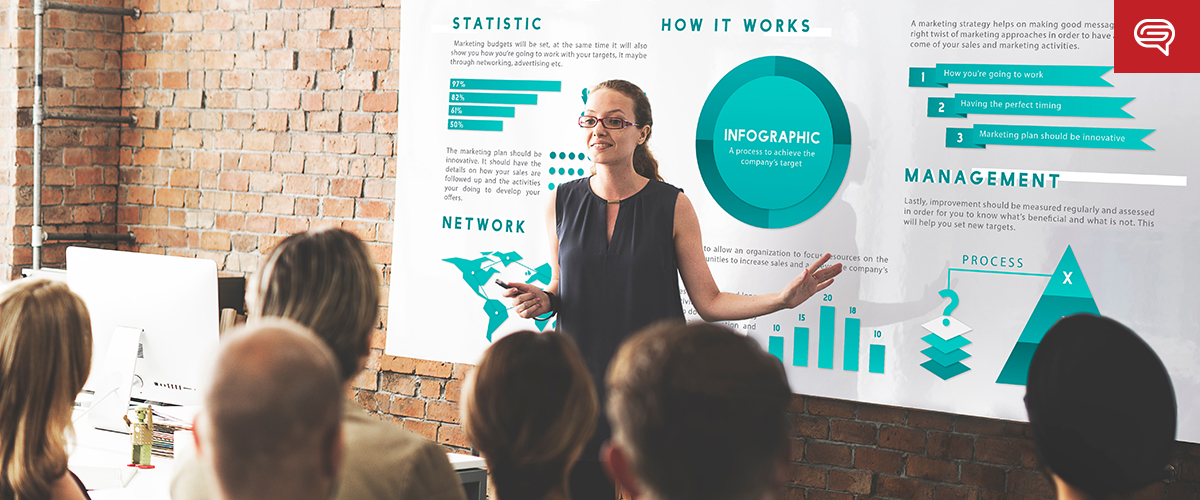
Repeating words and phrases in presentations is a powerful technique to enhance audience retention, engagement, and persuasion. This method, often referred to as anaphora in rhetoric, can make key points stick in your audience’s mind, build rhythm, and reinforce your core message. Here’s how repetition can significantly improve your presentation:
1. Reinforcing Key Messages
- Why it works: Repetition helps emphasize your core ideas, ensuring that your audience remembers the most critical parts of your presentation. When you repeat a word or phrase, it signals to the audience that this point is important and worth retaining.
- Supporting evidence: Studies in cognitive psychology suggest that repetition improves memory retention. When important information is repeated, it becomes easier for the brain to process and store, increasing the likelihood that your audience will recall it later .
- Example: If you’re presenting a business strategy, repeating a phrase like “Our competitive advantage is innovation” throughout the presentation reinforces that this is the focal point of your message.
2. Creating Rhythm and Flow
- Why it works: Repetition can create a rhythm or cadence that keeps your presentation moving smoothly. This rhythm makes your speech sound more polished and engaging, which can help hold the audience’s attention and make your delivery more persuasive.
- Supporting evidence: Public speaking expert Carmine Gallo points out that great communicators, like Steve Jobs, used repetition to create rhythm in their presentations, helping the audience stay engaged throughout . Repetition is also a hallmark of great speeches by leaders like Martin Luther King Jr. and Winston Churchill.
- Example: Use a repeated phrase at the beginning of several consecutive points, such as “The key to success is…” followed by different strategies, to create a sense of rhythm that guides the audience through your ideas.
3. Building Emotional Impact
- Why it works: Repetition can evoke emotions, especially when paired with powerful words or stories. By repeating emotionally charged words or phrases, you emphasize their significance, which can deepen the audience’s emotional connection to your message.
- Supporting evidence: Aristotle’s concept of pathos highlights the importance of emotional appeal in persuasion. Repeating emotionally resonant phrases can amplify pathos, drawing the audience closer to your message .
- Example: In a motivational speech, repeating phrases like “We can overcome” or “Together, we succeed” can inspire and emotionally engage the audience.
4. Simplifying Complex Information
- Why it works: When presenting complicated ideas, repetition helps to simplify and clarify the message. Repeating key terms or concepts ensures that the audience has more opportunities to grasp the idea, especially if they missed it the first time.
- Supporting evidence: Cognitive load theory suggests that individuals can only process a limited amount of information at once. Repetition reduces cognitive load by reinforcing important points, making it easier for the audience to absorb complex information .
- Example: When explaining a technical concept, like a new software feature, repeating a phrase such as “This tool increases efficiency by automating tasks” ensures the audience understands the main benefit even if the technical details are complex.
5. Encouraging Audience Participation
- Why it works: Repetition invites audience involvement. When you repeat a phrase multiple times, the audience becomes familiar with it and may start anticipating or even repeating it with you, fostering a sense of participation and connection.
- Supporting evidence: In motivational speaking and teaching, presenters often encourage audience engagement by using call-and-response repetition, which can increase participation and reinforce learning .
- Example: Use a repeated phrase like “What’s our goal? To grow” throughout your presentation, encouraging the audience to mentally or verbally respond to each prompt.
Conclusion
Repetition is a powerful tool in presentations that enhances clarity, retention, engagement, and emotional impact. By strategically repeating key phrases or ideas, you can ensure that your audience leaves with a strong understanding of your core message. Whether you’re simplifying complex concepts, building emotional resonance, or encouraging participation, repetition can make your presentation more memorable and persuasive.
Sources:
- Garr Reynolds, Presentation Zen
- Carmine Gallo on public speaking techniques
- Aristotle’s Pathos theory
- Cognitive Load Theory studies





